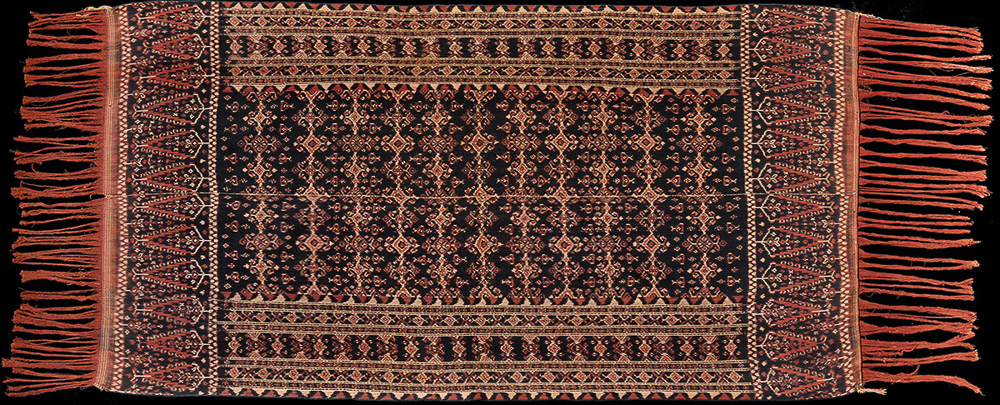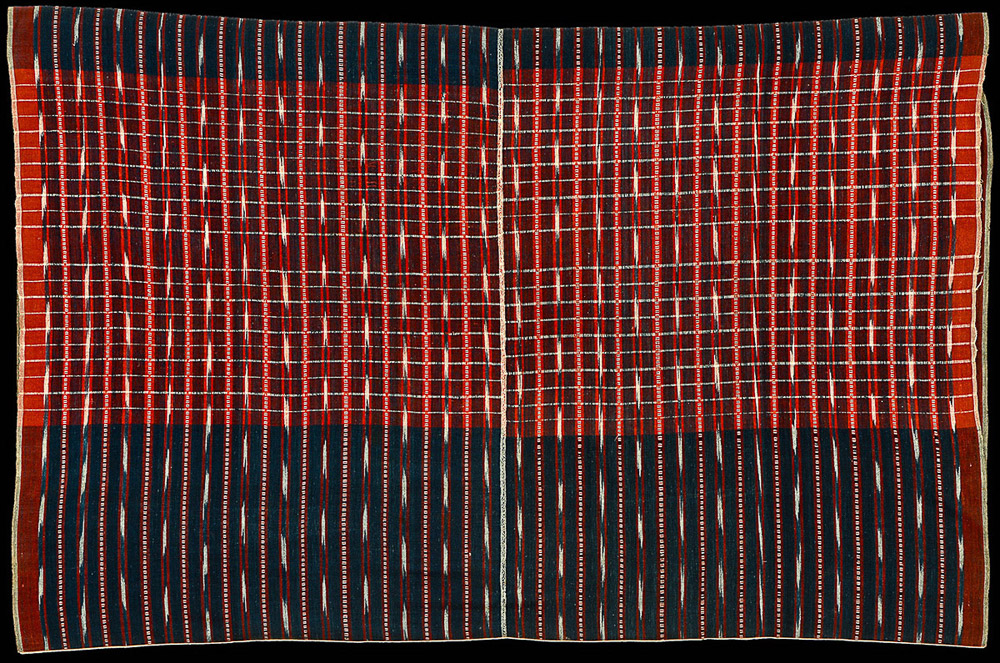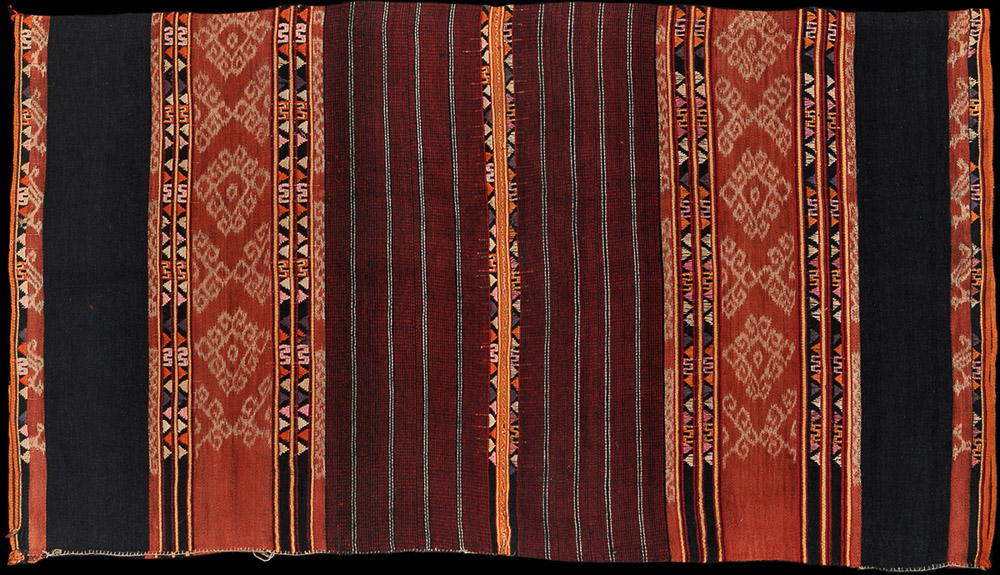Fibres of Life, Hong Kong University Museum and Art Gallery
Hong Kong University Museum and Art Gallery’s exhibition ‘Fibres of Life’ (15 September–26 November 2017) and the publication Ikat Textiles of the Indonesian Archipelago offer the world an overview of the ikat styles found across the islands, and the first comprehensive work of reference on the subject. Here follows an abridged extract from an article upcoming in HALI 192.

Man’s shawl, semba, Ende, Flores, 19th or early 20th century (before 1930). Warp ikat in fine hand-spun cotton
For both exhibition and book, HKMAG’s passion for Asian art is married to that of Peter ten Hoopen, whose collection is built upon an uncommon collecting philosophy. Many collectors select only the most impressive pieces in their field, but his aim is to illustrate not just individual masterpieces, but also the culture from which they were born. This requires complete geographic coverage of the cultural continuum of the chain of islands—the ‘ikat archipelago’—an ambition more typical of museums than private collections.
HKMAG has supported his approach, considering it the most appropriate way to deal with a material culture that is vanishing rapidly because the belief systems that informed it are changing. Ikat used to represent a vital societal element: a cloth without which one could not marry, send anyone to the afterlife, or properly receive a taken head. The old animist ways, the ancestor worship, the role of totem animals are fading as a result of conversion to monotheism, and economic pressures make it harder than in the past to spend months or even years on one ritual textile. On many islands this has negatively affected not just the quality of ikat, but also created concern for its history, as it has come to be seen as something of a past one has outgrown. Both exhibition and book show Indonesian ikat culture through a close reading of examples from over fifty weaving regions, giving a brief introduction to the conditions, beliefs and customs of the peoples who created them.

Hong Kong University Museum and Art Gallery’s exhibition ‘Fibres of Life’ offers the world an overview of the ikat styles found across the islands.
The aim of ‘Fibres of Life’ is to share a large number of representative specimens, mostly heirlooms, pusaka, and a summary of what is known about them, to provide impulses for further research. What knowledge is preserved about ikats and their use in the archipelago consists mostly of missionary records and scientific fieldwork.



























Comments [0] Sign in to comment